LiNet: A Lightweight Network for Image Super Resolution
Armin Mehri,
Parichehr Behjati Ardakani,
Angel D. Sappa

Auto-TLDR; LiNet: A Compact Dense Network for Lightweight Super Resolution
Similar papers
Single Image Super-Resolution with Dynamic Residual Connection
Karam Park, Jae Woong Soh, Nam Ik Cho

Auto-TLDR; Dynamic Residual Attention Network for Lightweight Single Image Super-Residual Networks
Abstract Slides Poster Similar
Residual Fractal Network for Single Image Super Resolution by Widening and Deepening
Jiahang Gu, Zhaowei Qu, Xiaoru Wang, Jiawang Dan, Junwei Sun

Auto-TLDR; Residual fractal convolutional network for single image super-resolution
Abstract Slides Poster Similar
Efficient Super Resolution by Recursive Aggregation
Zhengxiong Luo Zhengxiong Luo, Yan Huang, Shang Li, Liang Wang, Tieniu Tan

Auto-TLDR; Recursive Aggregation Network for Efficient Deep Super Resolution
Abstract Slides Poster Similar
RSAN: Residual Subtraction and Attention Network for Single Image Super-Resolution
Shuo Wei, Xin Sun, Haoran Zhao, Junyu Dong
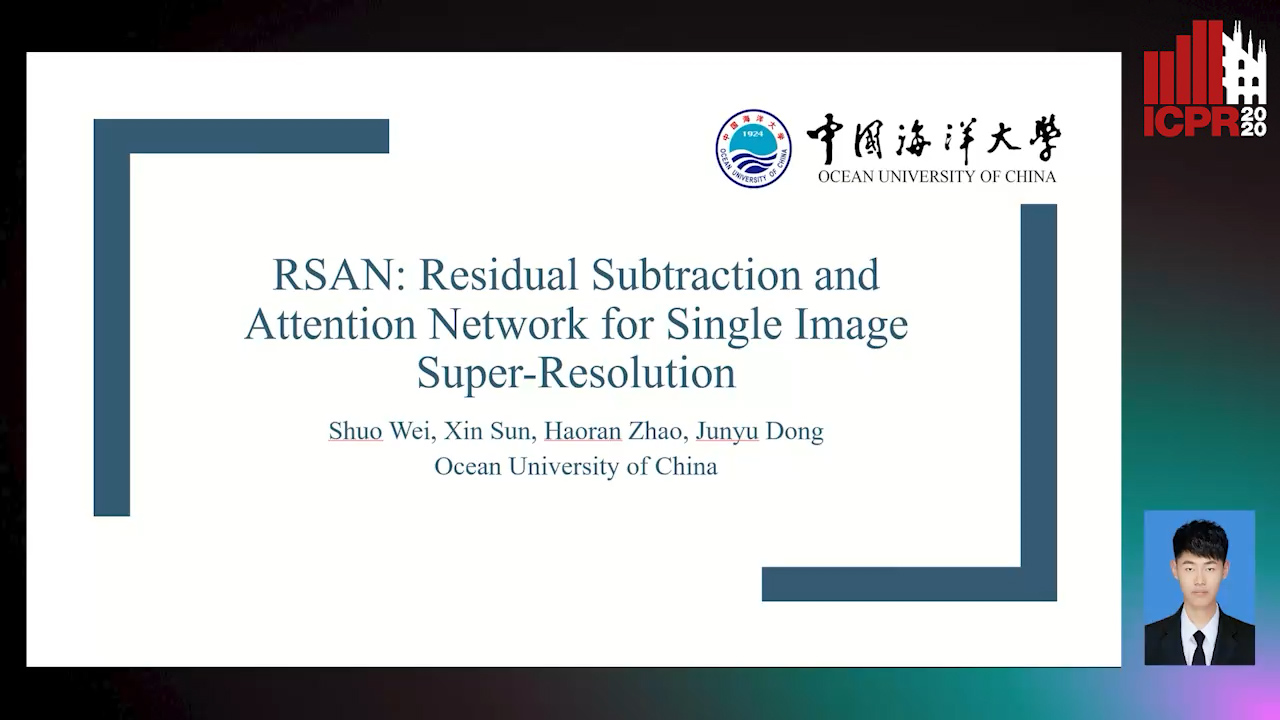
Auto-TLDR; RSAN: Residual subtraction and attention network for super-resolution
Hierarchically Aggregated Residual Transformation for Single Image Super Resolution

Auto-TLDR; HARTnet: Hierarchically Aggregated Residual Transformation for Multi-Scale Super-resolution
Abstract Slides Poster Similar
Boosting High-Level Vision with Joint Compression Artifacts Reduction and Super-Resolution
Xiaoyu Xiang, Qian Lin, Jan Allebach

Auto-TLDR; A Context-Aware Joint CAR and SR Neural Network for High-Resolution Text Recognition and Face Detection
Abstract Slides Poster Similar
Neural Architecture Search for Image Super-Resolution Using Densely Connected Search Space: DeCoNAS

Auto-TLDR; DeCoNASNet: Automated Neural Architecture Search for Super-Resolution
Abstract Slides Poster Similar
Progressive Splitting and Upscaling Structure for Super-Resolution

Auto-TLDR; PSUS: Progressive and Upscaling Layer for Single Image Super-Resolution
Abstract Slides Poster Similar
On-Device Text Image Super Resolution
Dhruval Jain, Arun Prabhu, Gopi Ramena, Manoj Goyal, Debi Mohanty, Naresh Purre, Sukumar Moharana

Auto-TLDR; A Novel Deep Neural Network for Super-Resolution on Low Resolution Text Images
Abstract Slides Poster Similar
Wavelet Attention Embedding Networks for Video Super-Resolution
Young-Ju Choi, Young-Woon Lee, Byung-Gyu Kim

Auto-TLDR; Wavelet Attention Embedding Network for Video Super-Resolution
Abstract Slides Poster Similar
Deep Iterative Residual Convolutional Network for Single Image Super-Resolution
Rao Muhammad Umer, Gian Luca Foresti, Christian Micheloni

Auto-TLDR; ISRResCNet: Deep Iterative Super-Resolution Residual Convolutional Network for Single Image Super-resolution
DID: A Nested Dense in Dense Structure with Variable Local Dense Blocks for Super-Resolution Image Reconstruction
Longxi Li, Hesen Feng, Bing Zheng, Lihong Ma, Jing Tian

Auto-TLDR; DID: Deep Super-Residual Dense Network for Image Super-resolution Reconstruction
Abstract Slides Poster Similar
Fast, Accurate and Lightweight Super-Resolution with Neural Architecture Search
Chu Xiangxiang, Bo Zhang, Micheal Ma Hailong, Ruijun Xu, Jixiang Li, Qingyuan Li

Auto-TLDR; Multi-Objective Neural Architecture Search for Super-Resolution
Abstract Slides Poster Similar
Cross-Layer Information Refining Network for Single Image Super-Resolution
Hongyi Zhang, Wen Lu, Xiaopeng Sun
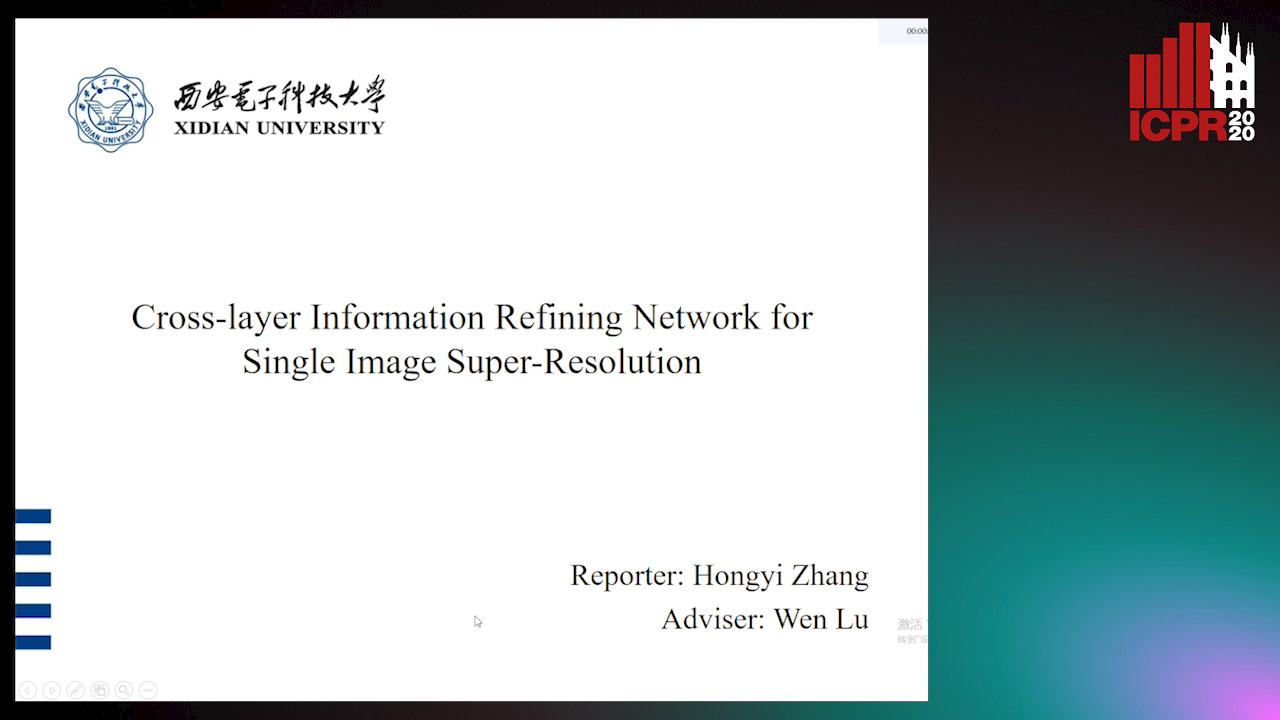
Auto-TLDR; Interlaced Spatial Attention Block for Single Image Super-Resolution
Abstract Slides Poster Similar
Face Super-Resolution Network with Incremental Enhancement of Facial Parsing Information
Shuang Liu, Chengyi Xiong, Zhirong Gao

Auto-TLDR; Learning-based Face Super-Resolution with Incremental Boosting Facial Parsing Information
Abstract Slides Poster Similar
Improving Low-Resolution Image Classification by Super-Resolution with Enhancing High-Frequency Content
Liguo Zhou, Guang Chen, Mingyue Feng, Alois Knoll

Auto-TLDR; Super-resolution for Low-Resolution Image Classification
Abstract Slides Poster Similar
OCT Image Segmentation Using NeuralArchitecture Search and SRGAN
Saba Heidari, Omid Dehzangi, Nasser M. Nasarabadi, Ali Rezai

Auto-TLDR; Automatic Segmentation of Retinal Layers in Optical Coherence Tomography using Neural Architecture Search
Small Object Detection Leveraging on Simultaneous Super-Resolution
Hong Ji, Zhi Gao, Xiaodong Liu, Tiancan Mei

Auto-TLDR; Super-Resolution via Generative Adversarial Network for Small Object Detection
TinyVIRAT: Low-Resolution Video Action Recognition
Ugur Demir, Yogesh Rawat, Mubarak Shah

Auto-TLDR; TinyVIRAT: A Progressive Generative Approach for Action Recognition in Videos
Abstract Slides Poster Similar
Multi-Laplacian GAN with Edge Enhancement for Face Super Resolution
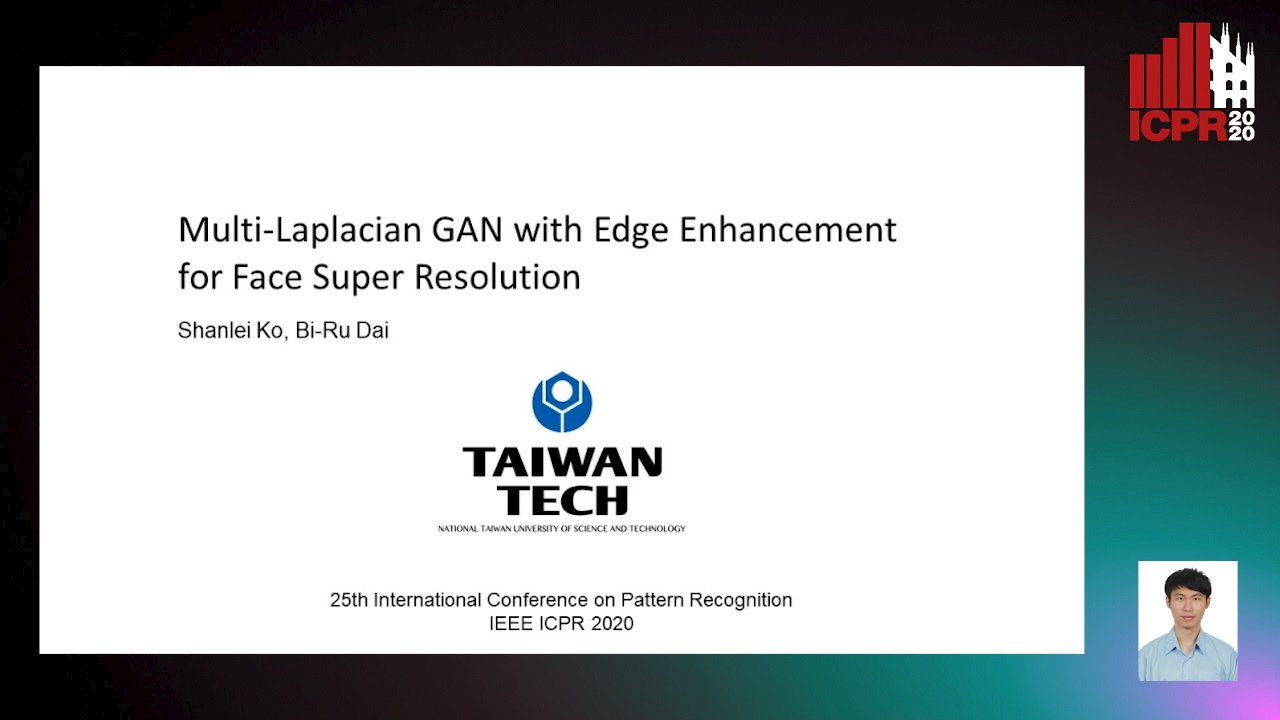
Auto-TLDR; Face Image Super-Resolution with Enhanced Edge Information
Abstract Slides Poster Similar
Tarsier: Evolving Noise Injection inSuper-Resolution GANs
Baptiste Roziere, Nathanaël Carraz Rakotonirina, Vlad Hosu, Rasoanaivo Andry, Hanhe Lin, Camille Couprie, Olivier Teytaud

Auto-TLDR; Evolutionary Super-Resolution using Diagonal CMA
Abstract Slides Poster Similar
Thermal Image Enhancement Using Generative Adversarial Network for Pedestrian Detection
Mohamed Amine Marnissi, Hajer Fradi, Anis Sahbani, Najoua Essoukri Ben Amara

Auto-TLDR; Improving Visual Quality of Infrared Images for Pedestrian Detection Using Generative Adversarial Network
Abstract Slides Poster Similar
Deep Universal Blind Image Denoising
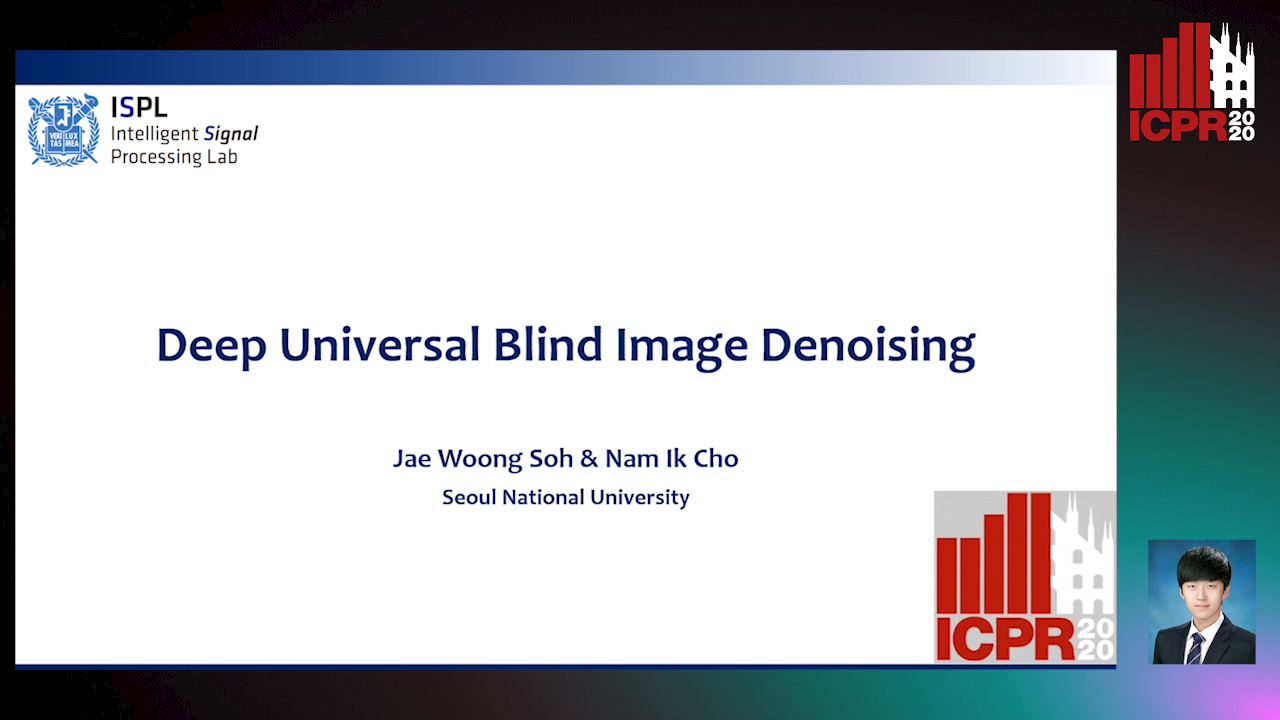
Auto-TLDR; Image Denoising with Deep Convolutional Neural Networks
Super-Resolution Guided Pore Detection for Fingerprint Recognition
Syeda Nyma Ferdous, Ali Dabouei, Jeremy Dawson, Nasser M. Nasarabadi

Auto-TLDR; Super-Resolution Generative Adversarial Network for Fingerprint Recognition Using Pore Features
Abstract Slides Poster Similar
Lightweight Low-Resolution Face Recognition for Surveillance Applications
Yoanna Martínez-Díaz, Heydi Mendez-Vazquez, Luis S. Luevano, Leonardo Chang, Miguel Gonzalez-Mendoza

Auto-TLDR; Efficiency of Lightweight Deep Face Networks on Low-Resolution Surveillance Imagery
Abstract Slides Poster Similar
Dynamic Guided Network for Monocular Depth Estimation
Xiaoxia Xing, Yinghao Cai, Yiping Yang, Dayong Wen

Auto-TLDR; DGNet: Dynamic Guidance Upsampling for Self-attention-Decoding for Monocular Depth Estimation
Abstract Slides Poster Similar
Context-Aware Residual Module for Image Classification
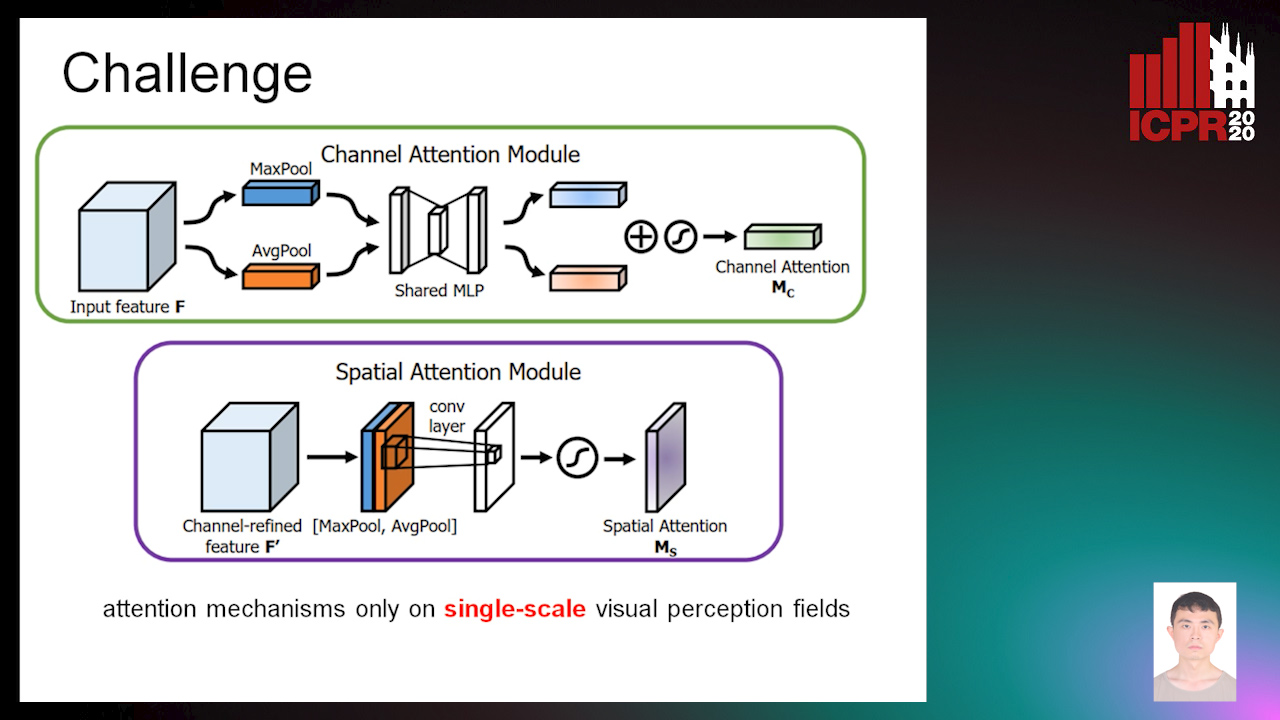
Auto-TLDR; Context-Aware Residual Module for Image Classification
Abstract Slides Poster Similar
Single Image Deblurring Using Bi-Attention Network

Auto-TLDR; Bi-Attention Neural Network for Single Image Deblurring
Fast and Accurate Real-Time Semantic Segmentation with Dilated Asymmetric Convolutions
Leonel Rosas-Arias, Gibran Benitez-Garcia, Jose Portillo-Portillo, Gabriel Sanchez-Perez, Keiji Yanai

Auto-TLDR; FASSD-Net: Dilated Asymmetric Pyramidal Fusion for Real-Time Semantic Segmentation
Abstract Slides Poster Similar
Deep Residual Attention Network for Hyperspectral Image Reconstruction
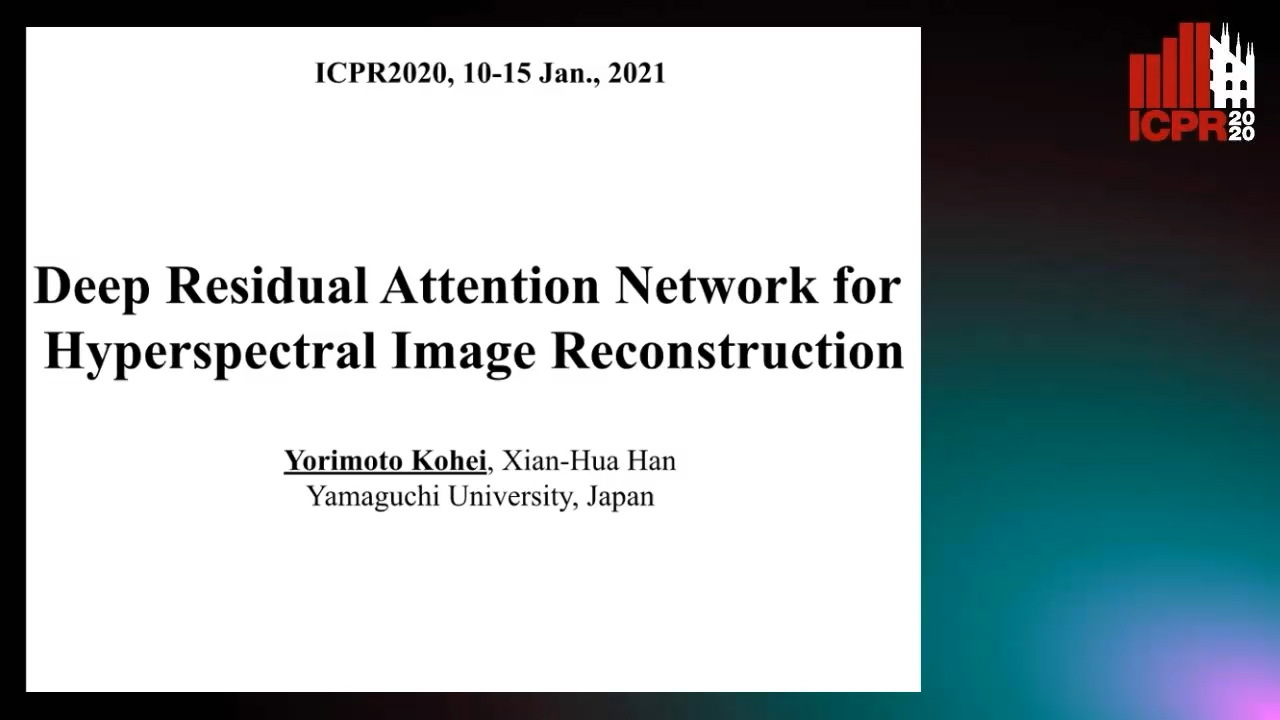
Auto-TLDR; Deep Convolutional Neural Network for Hyperspectral Image Reconstruction from a Snapshot
Abstract Slides Poster Similar
Joint Face Alignment and 3D Face Reconstruction with Efficient Convolution Neural Networks
Keqiang Li, Huaiyu Wu, Xiuqin Shang, Zhen Shen, Gang Xiong, Xisong Dong, Bin Hu, Fei-Yue Wang

Auto-TLDR; Mobile-FRNet: Efficient 3D Morphable Model Alignment and 3D Face Reconstruction from a Single 2D Facial Image
Abstract Slides Poster Similar
Automatical Enhancement and Denoising of Extremely Low-Light Images
Yuda Song, Yunfang Zhu, Xin Du

Auto-TLDR; INSNet: Illumination and Noise Separation Network for Low-Light Image Restoring
Abstract Slides Poster Similar
Transitional Asymmetric Non-Local Neural Networks for Real-World Dirt Road Segmentation

Auto-TLDR; Transitional Asymmetric Non-Local Neural Networks for Semantic Segmentation on Dirt Roads
Abstract Slides Poster Similar
Free-Form Image Inpainting Via Contrastive Attention Network
Xin Ma, Xiaoqiang Zhou, Huaibo Huang, Zhenhua Chai, Xiaolin Wei, Ran He

Auto-TLDR; Self-supervised Siamese inference for image inpainting
PSDNet: A Balanced Architecture of Accuracy and Parameters for Semantic Segmentation

Auto-TLDR; Pyramid Pooling Module with SE1Cblock and D2SUpsample Network (PSDNet)
Abstract Slides Poster Similar
Detail-Revealing Deep Low-Dose CT Reconstruction
Xinchen Ye, Yuyao Xu, Rui Xu, Shoji Kido, Noriyuki Tomiyama
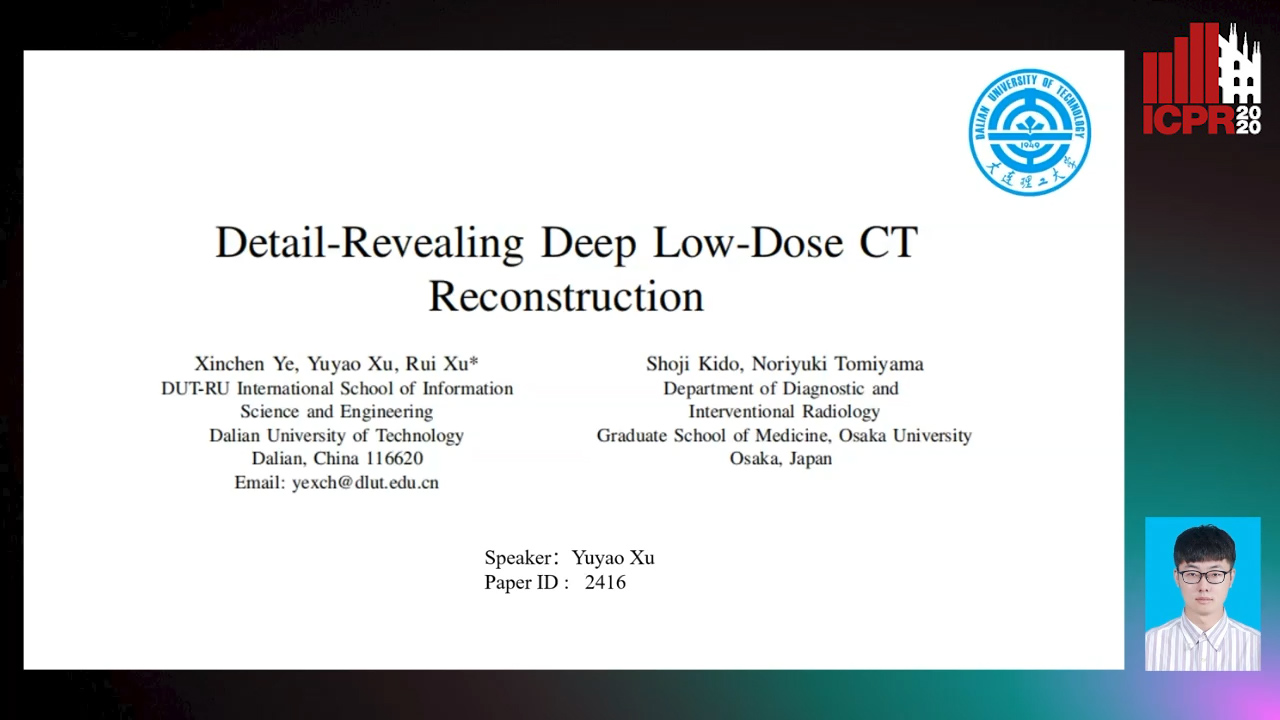
Auto-TLDR; A Dual-branch Aggregation Network for Low-Dose CT Reconstruction
Abstract Slides Poster Similar
Boundary Guided Image Translation for Pose Estimation from Ultra-Low Resolution Thermal Sensor
Kohei Kurihara, Tianren Wang, Teng Zhang, Brian Carrington Lovell

Auto-TLDR; Pose Estimation on Low-Resolution Thermal Images Using Image-to-Image Translation Architecture
Abstract Slides Poster Similar
Fast and Efficient Neural Network for Light Field Disparity Estimation
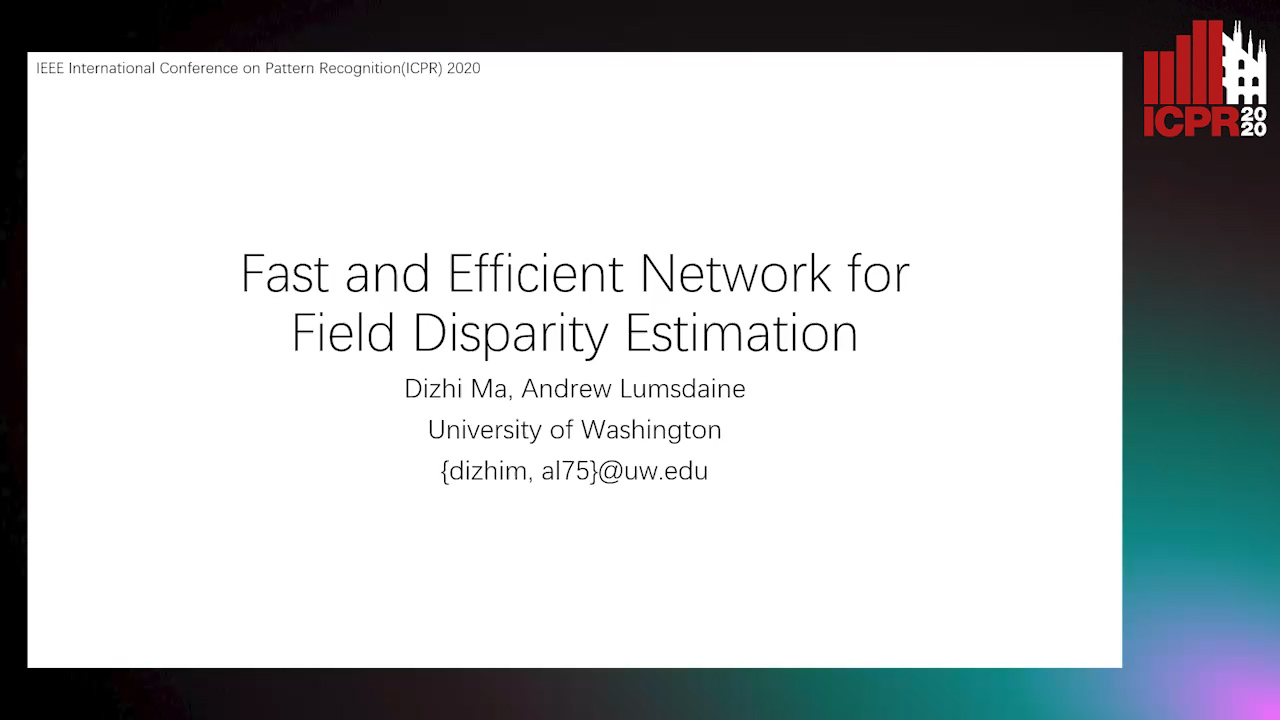
Auto-TLDR; Improving Efficient Light Field Disparity Estimation Using Deep Neural Networks
Abstract Slides Poster Similar
SIDGAN: Single Image Dehazing without Paired Supervision
Pan Wei, Xin Wang, Lei Wang, Ji Xiang, Zihan Wang

Auto-TLDR; DehazeGAN: An End-to-End Generative Adversarial Network for Image Dehazing
Abstract Slides Poster Similar
Adaptive Image Compression Using GAN Based Semantic-Perceptual Residual Compensation
Ruojing Wang, Zitang Sun, Sei-Ichiro Kamata, Weili Chen

Auto-TLDR; Adaptive Image Compression using GAN based Semantic-Perceptual Residual Compensation
Abstract Slides Poster Similar
A NoGAN Approach for Image and Video Restoration and Compression Artifact Removal
Mameli Filippo, Marco Bertini, Leonardo Galteri, Alberto Del Bimbo
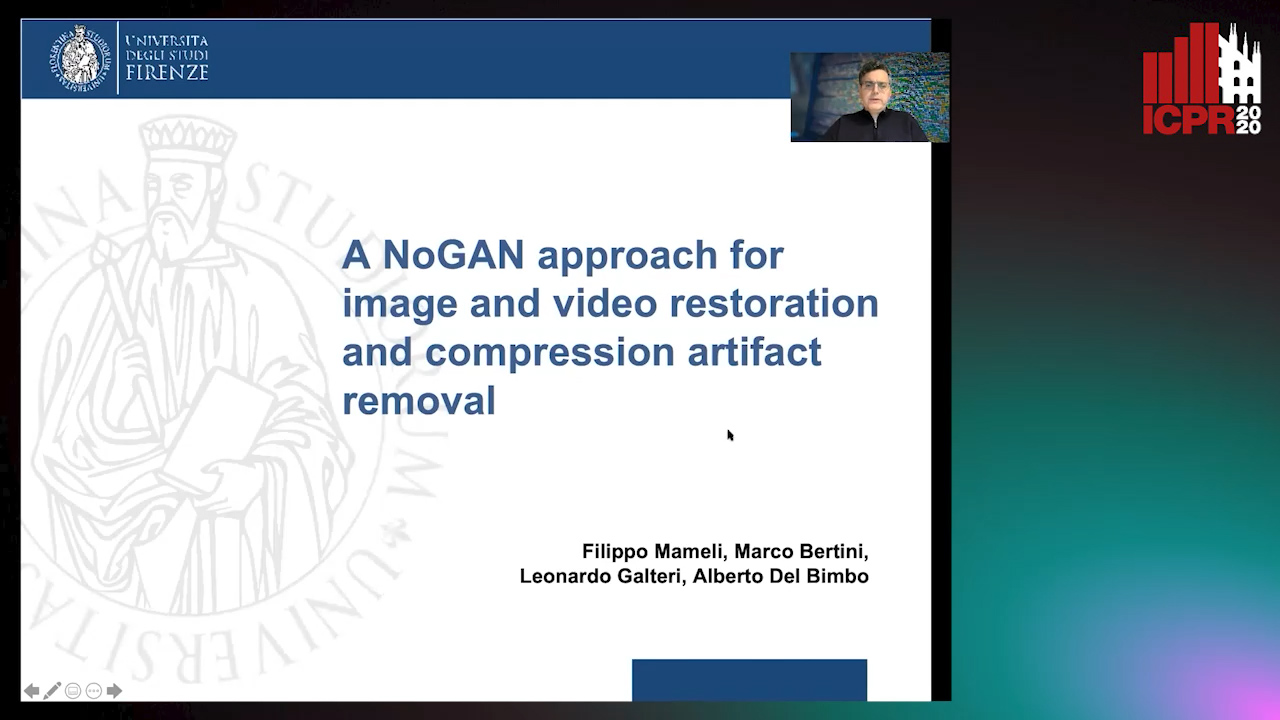
Auto-TLDR; Deep Neural Network for Image and Video Compression Artifact Removal and Restoration
MBD-GAN: Model-Based Image Deblurring with a Generative Adversarial Network

Auto-TLDR; Model-Based Deblurring GAN for Inverse Imaging
Abstract Slides Poster Similar
VPU Specific CNNs through Neural Architecture Search
Ciarán Donegan, Hamza Yous, Saksham Sinha, Jonathan Byrne

Auto-TLDR; Efficient Convolutional Neural Networks for Edge Devices using Neural Architecture Search
Abstract Slides Poster Similar
Fine-Tuning DARTS for Image Classification
Muhammad Suhaib Tanveer, Umar Karim Khan, Chong Min Kyung

Auto-TLDR; Fine-Tune Neural Architecture Search using Fixed Operations
Abstract Slides Poster Similar
FastSal: A Computationally Efficient Network for Visual Saliency Prediction

Auto-TLDR; MobileNetV2: A Convolutional Neural Network for Saliency Prediction
Abstract Slides Poster Similar
Small Object Detection by Generative and Discriminative Learning
Yi Gu, Jie Li, Chentao Wu, Weijia Jia, Jianping Chen

Auto-TLDR; Generative and Discriminative Learning for Small Object Detection
Abstract Slides Poster Similar
Stage-Wise Neural Architecture Search
Artur Jordão, Fernando Akio Yamada, Maiko Lie, William Schwartz
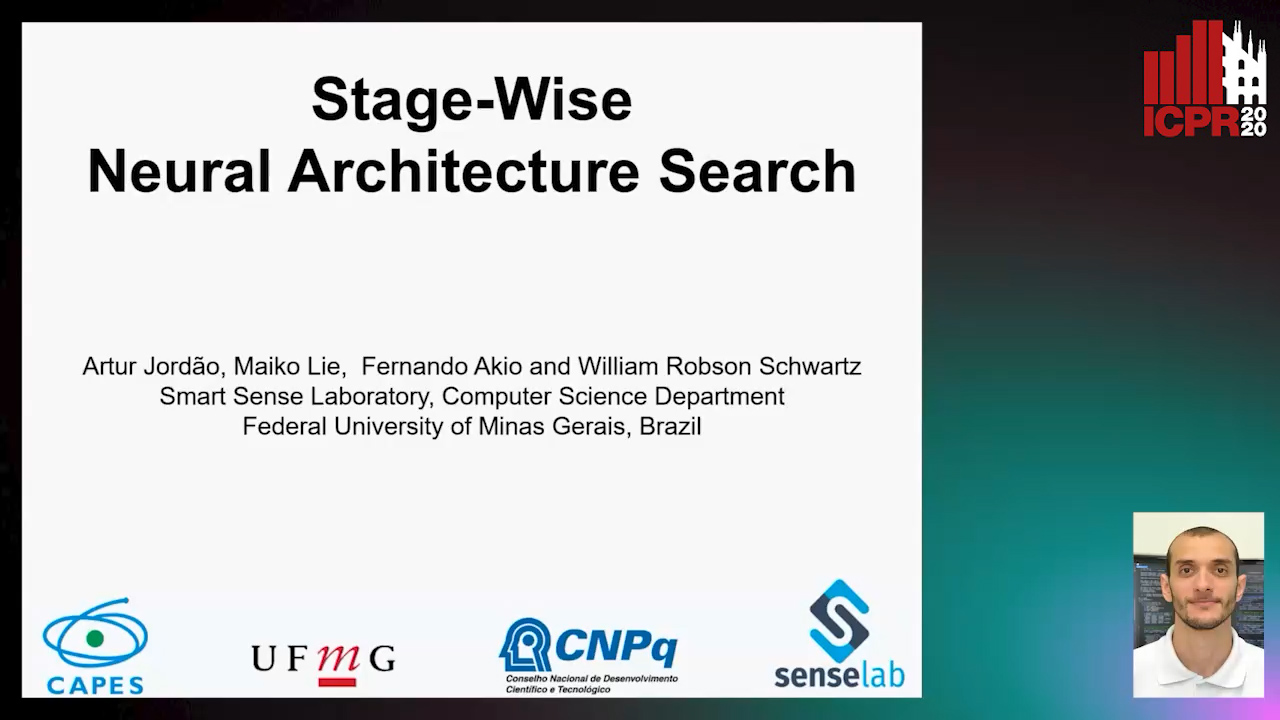
Auto-TLDR; Efficient Neural Architecture Search for Deep Convolutional Networks
Abstract Slides Poster Similar
Real-Time Monocular Depth Estimation with Extremely Light-Weight Neural Network
Mian Jhong Chiu, Wei-Chen Chiu, Hua-Tsung Chen, Jen-Hui Chuang

Auto-TLDR; Real-Time Light-Weight Depth Prediction for Obstacle Avoidance and Environment Sensing with Deep Learning-based CNN
Abstract Slides Poster Similar